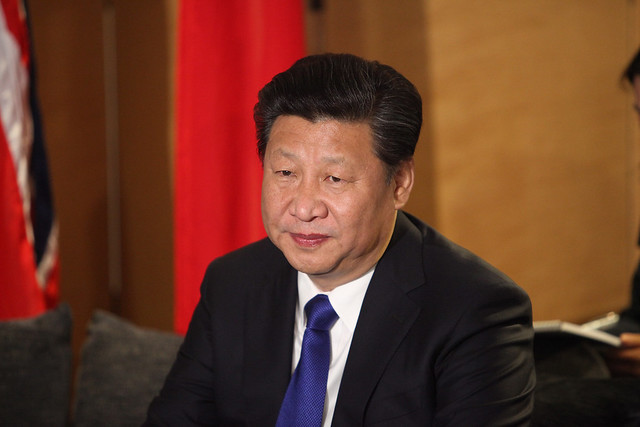

In the 1930s, a U.S. merchant named Carl Crow, who ran the first Western advertising agency in China for 25 years, wrote a book about China entitled “400 Million Customers.” That about summed up how the U.S. bourgeoisie looked at China at that time.
How could they make money off of the hundreds of millions of Chinese people? That was their main interest.
And it hasn’t changed.
Here’s a headline from CNBC News of April 1 this year: “Dow rises 200 to start off the quarter on strong U.S. and China data, trade progress.”
During the previous week, the Dow had gone up and down by hundreds of points each day as the news gyrated over whether or not there was progress in trade talks between the two countries.
Of course, the big difference between China in Crow’s time and now is that a tremendous social upheaval there changed everything. The millennia-old stranglehold of the landlords over the peasants followed by the growth in the 19th century of a ruling class of bankers, merchants and manufacturers tied to world imperialism was upended in 1949 by a socialist revolution, led by the Communist Party of China and based in both the workers and the peasants.
In the nearly 70 years since then, China has grown from the 400 million “customers” of the 1930s to a population of 1.4 billion — over four times that of the U.S. today. That’s a lot of people to feed, but famine in China is a thing of the past, because the country has also gone from being one of the poorest in the world to the largest exporter of goods and the second-largest global economy. With a 6 percent annual growth rate, China is on track to surpass the U.S. in a few years.
On the horns of a dilemma
The capitalist ruling class in the U.S. is on the horns of a dilemma. They want, and need, the 1.4 billion “customers” now in China. U.S. agribusiness in particular has become dependent on selling a lot of wheat, soybeans, corn and other foods to China. Which China needs, because it covers a land area the same size as the U.S., but with four times the number of mouths to feed.
At the same time, the U.S. ruling class hates the control over China’s economy exerted by the 90-million-member Communist Party.
That control explains how China has been able to lift hundreds of millions of people out of poverty. According to the World Bank, more than 500 million people were lifted out of extreme poverty in China as the rate fell from 88 percent in 1981 to 6.5 percent in 2012.
That trend has continued. As of 2018 the number of people living below the national poverty line was about 2 percent of the population. China expects to totally eradicate poverty by 2020.
This has earth-shaking significance; yet it is rarely acknowledged by the mass media here.
The U.S. ruling class hates the Communist Party of China for maintaining control over its economy and not totally “opening up” China to foreign investors, who want free rein to come and exploit its labor and resources. The political representatives of the billionaires here make endless complaints about it. But at the same time, the U.S. ruling class has come to depend on all these new “customers” who now can actually buy things the U.S. owners of capital need to sell.
Here’s how the April 2 New York Times, the “liberal” paper of Wall Street, sees it: “At the heart of President Trump’s negotiations with China is a troubling contradiction: The United States wants to use the trade talks to encourage the country to adopt a more market-oriented economy. But a key element of a prospective deal may end up reinforcing the economic power of the Chinese state.
“Negotiators are still working out deal terms, but any agreement seems certain to involve China’s promise to purchase hundreds of billions of dollars of American goods. For Mr. Trump, this is an essential element that will help reduce the United States’ record trade deficit with China and bolster farmers and other constituencies hurt by his trade war.
“But those purchases will be ordered by the Chinese state, and most will be carried out by state-controlled Chinese businesses, further cementing Beijing’s role in managing its economy and potentially making United States industries even more beholden to the Chinese.”
Of course, the people of China are more than customers. These days, they are also astronauts, city planners, high-speed train engineers and innovators of new technology. And they have shown the world what public ownership and a planned economy can accomplish — even one that has made many concessions to private capital in order to develop.
(PHOTO CREDIT: Foreign and Commonwealth Office)
The following is Part 2 of a talk given by the author to a meeting…
Boston Students, professors and workers are confronting the Trump administration’s fascist crackdown at universities across…
Philadelphia Within days of Swarthmore students reviving a pro-Palestinian encampment on April 30, police arrested…
The No More 24 Campaign held a rally in front of City Hall on…
Thessaloniki, Greece Two years ago there was a catastrophic accident on the railroad line that…
Download the PDF Black and white version In over 1,000 U.S. cities Workers mobilized for…